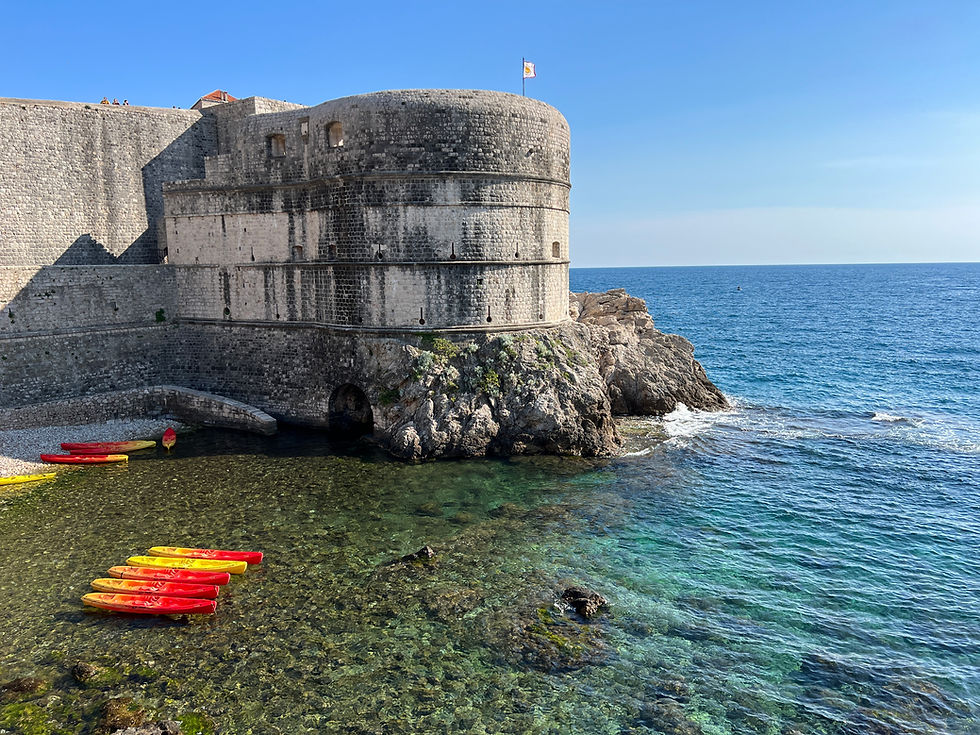Best Things to Do in Kraków: A Complete Guide to Poland’s Cultural Capital
- Will Gerson
- 3 days ago
- 4 min read
Though it lost its status as the national capital at the end of the 16th century, Kraków has remained Poland’s preeminent city in culture, academia, and the arts to this day. Its Old Town is often regarded as one of the most beautiful historic centers in Europe; for this reason, it was one of the twelve sites included on the inaugural UNESCO World Heritage list. Read on for a guide to exploring this exquisite city.
Main Square
Kraków’s central market square is the largest in Europe, a testament to the city’s importance as a commercial center in medieval times. As a member of the Hanseatic League, the city was a nexus of wide-ranging trade networks, attracting skilled craftsmen from around Europe as well as luxury imports from the East, exchanged in the monumental Cloth Hall that stands in the square’s center.

On the east side of the square, the twin Gothic spires of Saint Mary’s Church rise high above the city, although the two are different heights. Legend has it that two brothers were commissioned to build the towers; when the younger brother discovered that his brother’s tower was going to be taller than his, he murdered his older brother out of envy. Later, racked by guilt, the younger brother stabbed himself with the same knife he had used to kill his brother, falling from the top of his tower into the square below. You can find the knife hanging in the Cloth Hall today.

Be sure to step inside the church, too, to admire its famed wooden altarpiece, considered one of Poland’s national treasures.

Saint Andrew’s Church
Just south of the Main Square, this church is one of the oldest buildings in Kraków, built in the late 11th century. The church is considered an example of a ‘fortified church,’ having served as a place of refuge for citizens during the Mongol invasion of 1241; in fact, it was the only one of Kraków’s churches to survive the attack.

Wawel Royal Castle
Continue south past the church and you will soon come face to face with the royal castle, arguably the most famous historic site in Poland, which sits atop a hill overlooking the Vistula river. Built by order of King Casimir III the Great in the 14th century, the castle served not only as the residence of the kings of Poland but also as a symbol of Polish national sovereignty.

Having been expanded over the centuries, the castle complex is effectively an open-air museum of hundreds of years of major European architectural styles, with a host of different structures from the medieval, Renaissance, and Baroque eras. The castle’s dominant building is the Wawel Cathedral, where centuries of Polish monarchs were crowned, which also houses the famous Sigismund Bell in its tower, which weighs 13 tons and requires a 12-man team to ring it.

Take your time wandering the castle complex, as there is beauty and history around every corner. Be sure to go inside the cathedral, climb the steps up to the bell tower, visit the art museum, and explore some of the outer buildings as well to get a taste of what life would have been like here in the Middle Ages.
Wieliczka Salt Mine
Salt was a prized possession in the Middle Ages, just as valuable as silver or gold, and Poland was one of its main producers. Most of the great buildings you see in Kraków were paid for through the trade of salt, much of which was extracted at this salt mine southeast of the city.

In operation from the 13th century until 1996, the Wieliczka Salt Mine is an incredible monument to this legacy. An engineering marvel, the mine goes down 1,073 feet (327 m) below the surface of the ground and extends for 178 miles (287 km), 2.2 miles (3.5 km) of which have been turned into a route for guided visits. A seemingly endless walk down the wooden stairs of the mine shaft set the scene for the visit (don’t worry—you take the mining elevator on the way back up), as you can really feel the depth at which you now stand.

The chambers of the mine are quite spacious, and many are adorned with statues carved out of salt by the miners themselves, telling the history of this place. One of the most impressive areas is the cavernous Saint Kinga’s Chapel, built and decorated by the miners as a place of worship. The chapel is also famous for its exceptional acoustics, and it is sometimes even used as a concert venue.

The mine has long attracted visitors who come to marvel at this impressive human achievement, from Copernicus, Goethe, and Chopin to more contemporary figures like Pope John Paul II and former US president Bill Clinton. Located about a half hour from the Old Town by car, it is not to be missed on your visit to Kraków.

Auschwitz-Birkenau State Museum
About an hour and fifteen minutes west of the city is another obligatory visit, albeit for a much different reason. Auschwitz, the most infamous of the Nazi concentration camps, serves as a reminder of the unspeakable atrocities that humans are capable of committing toward their fellow man.

Not much can be said about this place where 1.1 million people were murdered, 960,000 of whom were Jewish—what I will say is that the guided visit is very well done, and I would recommend it to any adult.




